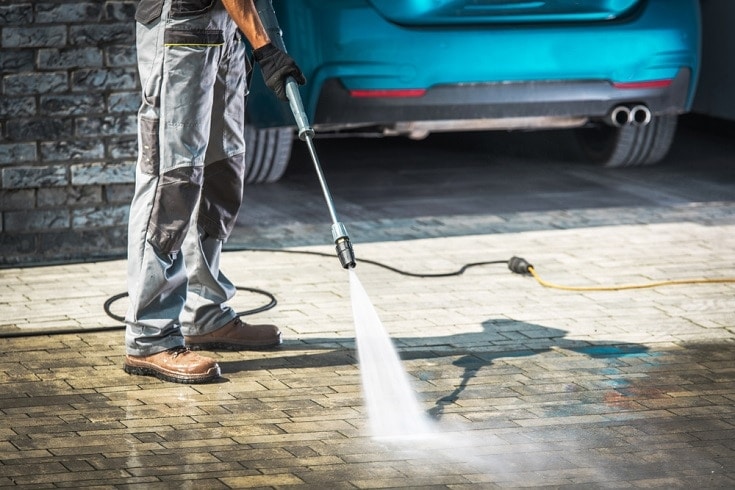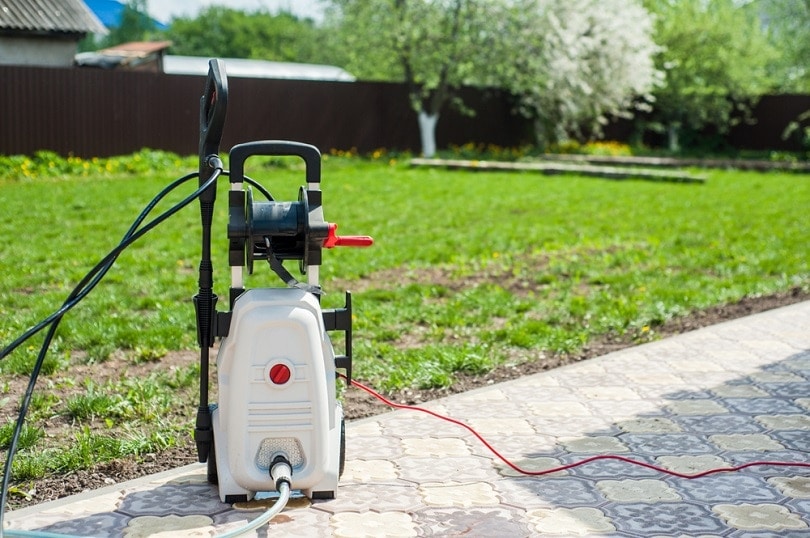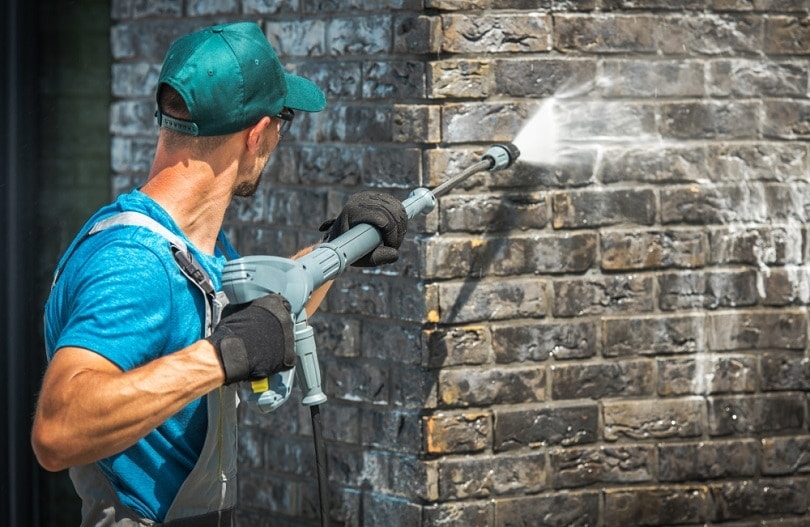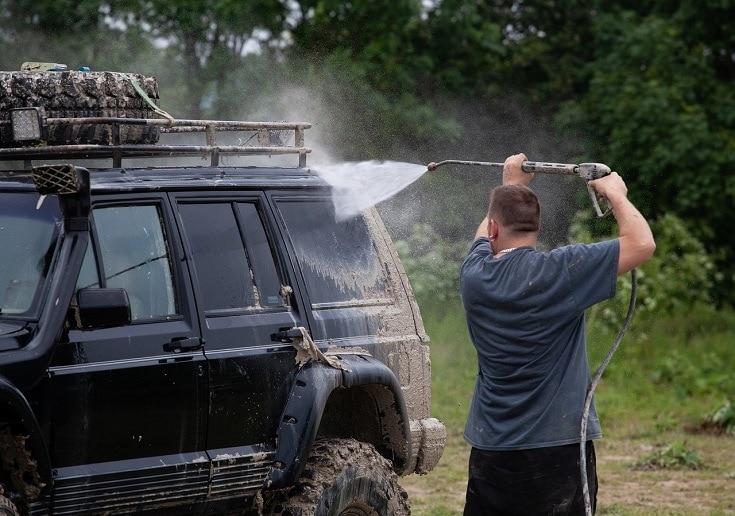How to Use a Pressure Washer: 5 Effective Tips
-
Codee Chessher
- Last updated:

Pressure washers are one of the best ways to clean decks, patios, exterior walls, and nearly anything that could use a good cleaning. They’re not always very intuitive for beginners, but luckily, it’s pretty easy to learn.
To get you started, we’ve compiled a list of handy tips that will have you well on your way to pressure washing like a pro.
The 5 Tips How to Use a Pressure Washer
1. Selecting the Right Pressure Washer for You
It can be hard to shop for a pressure washer if you don’t know what you’re looking for. First, you want to choose between gas and electric.
Gas-powered pressure washers are best for heavy-duty outdoor jobs because you can’t use them indoors and their gas supply is portable. Electric pressure washers, on the other hand, can be used anywhere. They don’t put out as much water pressure as a gas one, though.
The next is what class of pressure washer you need. Let’s take a brief look at those below.
- Light-Duty: Generally limited to units that put out less than 2,000 PSI, these are perfect for occasional and minor cleaning tasks
- Medium-Duty: Flexible enough to clean concrete sidewalks or vinyl siding, these units have between 2,000–2,800 PSI
- Heavy-Duty: With 2,900–3,300 PSI, these are suitable for cleaning tough surfaces
- Professional: Anything above 3,300 PSI is generally considered professional grade—the type of machine used in industrial settings.

2. Check the Water Supply
Perhaps the most common pressure washer newbie mistake is not making sure the water supply is good enough to pressure wash. As a rule of thumb, you want 5 gallons to come out of the spigot in under 2 minutes. Use a bucket to test it.
The better the water pressure from your supply, the better your power washing results will be. Lastly, clear the area of any obstacles that might fly around, like toys or lawn furniture.
3. Choosing the Right Nozzle for the Job
Once you’ve picked out the perfect pressure washer for you, it’s time to use the right nozzle for the task at hand. Nozzles range from 0 degrees to 40 degrees and are useful in different situations. Let’s check out which nozzles are used for which jobs below.
- 0 degrees (red): These shoot a focused stream of water at high PSI, so it’s best used to reach high walls and on construction equipment. Risky to use at close range, especially with delicate surfaces.
- 15 degrees (yellow): Powerful but gentle enough for exterior walls, this nozzle can be used to remove caked-on grime and prepare surfaces for painting.
- 25 degrees (green): Most commonly used to clean large surface areas with light dirt
- 40 degrees (white): Used to clean delicate glass
If you’re cleaning a two-story house, you might want the red nozzle for cleaning the upper level. Then you could use the yellow to blast off some caked-on grime and finish up with the green nozzle.
For windows, use the super-gentle white nozzle. Each one is very useful for the job it does, so be sure to use the appropriate nozzle.

4. Do a Test Run
As a trial run for your brand-new pressure washer, pick out the green nozzle and choose a soft wood surface to clean. A deck is a perfect selection, but siding works too. Follow the next steps closely to get used to pressure washing.
- Use long, even strokes with an up-and-down motion. Make sure to hold the wand with two hands so you don’t accidentally lose control of it.
- Make multiple light passes over an area to get a feel for how it works and to avoid unsightly marks.
- Always stop at the beginning or end of an area so you don’t lose your place.
- Prepare Your Surface
It’s easy to get trigger-happy with the wand but stop a minute before tackling heavy-duty grime and dirt. Load your favorite detergent into the soap compartment of the pressure washer and use a wide spray nozzle to thoroughly coat the surface you’ll be cleaning. Let it sit there for a few minutes and soak into the surface, softening the dirt and gunk. Now clean as usual. A few minutes of prep work can make all the difference with caked-on grime.
5. Maintain the Correct Cleaning Angle
Pressure washer wands work best from a perpendicular angle, so maintain that angle whenever possible. Everyone knows the pain of cramping your hand reaching up underneath a low surface, but there doesn’t seem to be a solution.
If you need to wash underneath decks or high up on a second-story wall, you may want to invest in a pivoting pressure washer wand. You can adjust the angle on the wand to reach any surface with your desired angle.

Conclusion
Pressure washers are a practical and fun way to clean but require some basic knowledge to make the most of. Using the correct nozzle and preparing surfaces alone will make a huge difference in your pressure-washing projects to come.
Featured Image Credit: Virrage Images, Shutterstock
Contents
